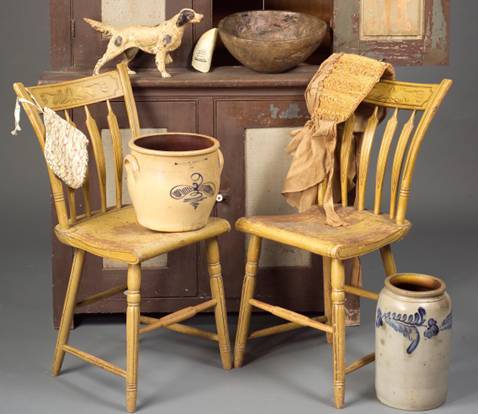How To Get The Most Out Of Your Antiques Appraisal
After you choose an auction house to work with, you need to get your property evaluated by an expert appraiser. This can be done online, in person, or at your home.
How To Submit Photos For An Antiques Appraisal Online
If you’re submitting photos via email or online via a company’s website, make sure the objects are photographed in focus and well-lit.
Send three different pictures (at most) of each item for an online antiques appraisal:
1. The whole object should be well-lit and in focus.
2. A detail shot showing a signature, stamp, or label; also, a close-up of any damage or condition issues.
3. A photo of any supporting documentation such as bills of sale, notes, letters, or prior written appraisals.
What To Bring To An Antiques Appraisal Appointment
If you’d prefer to bring your antiques and fine art items to the auction house’s gallery, don’t just drop by. Call first to make an appointment, to be sure the right specialist will be on hand to view your property. Bring all supporting documentation with you and tell the appraiser all you know about an object—how long it has been in your family, where it came from, when it was purchased, who owned it, and how it came into your possession. Sometimes these stories are little more than family lore, but most times they can provide clues to an item’s provenance and authenticity.
How To Prepare For A House Call
If an appraiser is making a house call, have all objects in question readily available and easily accessible. As with an appraisal appointment, gather all supporting paperwork in advance. There’s no need to prepare or clean objects first, and in fact, experts discourage it. Seeing objects in “as is” condition helps an appraiser understand an object’s history and well-meaning but overzealous cleaning can sometimes damage a delicate object, or remove patination and original surface.
First, Receive Auction Estimates, Then Consign
The appraiser should provide a verbal appraisal or “auction estimate” for each item he or she views. This will be a range in price that they expect the item to sell for at auction. Upon receiving those estimates, you can then decide which pieces you would like to consign. For furniture or large consignments, a truck will be scheduled to gather the material at a later date. If an appraiser tells you your item is not auctionable, trust their advice. New items and items below a certain price point typically don’t sell well at auction. Both the auction house and the consignor want objects to achieve maximum value at auction.
Be sure to watch for Part 3 …The Auction Schedule.
Visit Our Homeowners Insurance Page
At Murphy Insurance, we take great care in assessing your options for homeowners insurance to ensure that you receive the most favorable value. Our dedication to serving you entails collaborating with highly-rated insurance providers and conducting comprehensive assessments of available choices. Our goal is to achieve the ideal equilibrium between affordability and coverage that suits your unique needs. Please let us provide you with a customized homeowners insurance quote.












